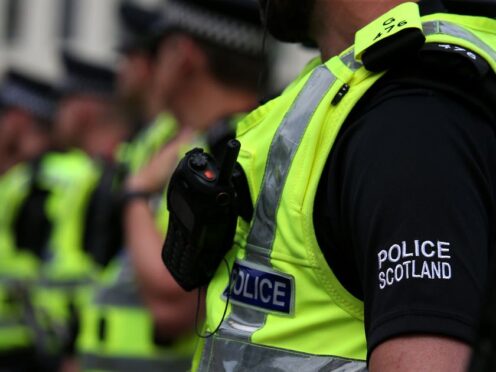
Police Scotland is becoming a “reactive service” where the force is only guaranteed to attend at serious incidents, the head of the body which represents rank and file officers has warned.
David Threadgold, chairman of the Scottish Police Federation (SPF), claimed that the “basic principles of engagement and proactivity” were being lost, saying as a result Police Scotland is “becoming irrelevant in our communities”.
He spoke out as a report seen by 1919 Magazine claimed a freeze on officer recruitment had resulted in higher absence rates among police officers, as well as a fall in the crime detection rate.
The justice and home affairs magazine quoted the report as saying the recruitment freeze “has had an impact on police officers’ welfare which has resulted in a higher level of absence, increased modified officers and there has also been reductions in proactive crime prevention and reductions in detection rate”.
Mr Threadgold meanwhile claimed that key decisions in the last six months have been based solely on finance, and that the welfare of officers has now become a “secondary consideration”.
Writing in 1919, the SPF chairman said: “I cannot accept that a single executive decision in the last six months has been based on anything other than finance.
“The welfare of officers has been a secondary consideration and I challenge anyone to produce evidence to the contrary.”
He added that for Police Scotland “the basic principles of engagement and proactivity are being lost and as a result we are becoming irrelevant in our communities”.
Mr Threadgold said “that is unacceptable” as he added: “Police Scotland is becoming a reactive service where attendance will only be assured at ‘serious’ incidents.”
He continued: “There is a recruitment and retention crisis that creates uncertainly from within, alongside increased levels of physical and mental health absence.
“The force must recruit, train, and empower officers effectively if we are to achieve success in delivering policing for our communities.”
His comments come as the recent recruitment freeze was cited as having helped police cut the projected overspend on its £1.4 billion budget for 2023-24 from almost £19 million to £5 million.
However police numbers have reached their lowest level since 2008, with official figures showing the force had 16,363 full-time equivalent officers as of December 31 2023.
And in the run-up to this year’s Scottish budget, Chief Constable Jo Farrell had called on the Scottish Government to provide the force with an extra £128 million next year so it can maintain “a visible, accessible and proactive front line”.
She has already said the force “must focus intensely” on its core duties, along with “what matters to the people we serve”
Speaking in February she said: “As Chief Constable, my operational focus is in three areas – first, addressing threat, harm, and risk; second, prevention, problem solving and proactivity; and third, looking after the wellbeing of officers and staff so they can deliver for the public.”
Justice Secretary Angela Constance stressed that “despite deeply challenging financial circumstances” the Scottish Government had provided Police Scotland with “record” funding of £1.55 billion for 2024-25, saying this was an increase of £92.7 million.
Ms Constance added: “Scotland continues to have more police officers per head of population than England and Wales and Scotland’s officers are the best paid at all levels.
“Recorded crime is at one of the lowest levels since 1974.”

She also said she welcomed Ms Farrell’s “commitment to workforce wellbeing”, saying that police officers and staff can access a range of services to help with their psychological and physical needs through the force’s Your Wellbeing Matters programme.
But Scottish Conservative justice spokesman Russell Findlay said: “Police officers and the public are paying the price of the relentless weakening of Scottish policing while SNP ministers are in a state of denial about the consequences of their own actions.
“Of particular concern is that the wellbeing of our hard-working police officers has (been) allowed to become an afterthought. To gamble with officer safety is unforgiveable.”
Liberal Democrat justice spokesperson Liam McArthur told 1919 the Scottish Government had had “policing budgets in a chokehold for years, causing officer numbers to plummet to a record low and putting communities at greater risk”.
The Lib Dem added: “Officers feel unsupported, overwhelmed, and stretched dangerously thin. These pressures simply heighten the possibility of an exodus of experienced and skilled people from the service.
“With policing bodies now warning of a public safety crisis, it’s time for the Scottish Government to listen. Ministers must finally commit to resourcing the service properly and place the welfare of officers and staff at the centre of decisions about the future.”

Enjoy the convenience of having The Sunday Post delivered as a digital ePaper straight to your smartphone, tablet or computer.
Subscribe for only £5.49 a month and enjoy all the benefits of the printed paper as a digital replica.
Subscribe